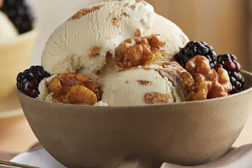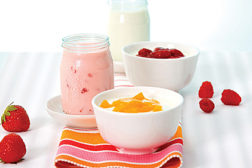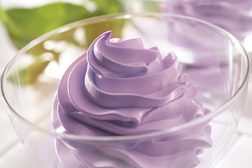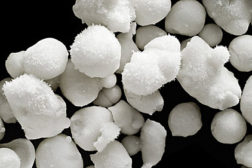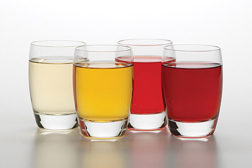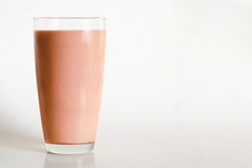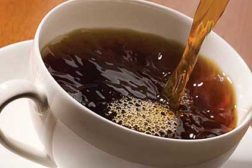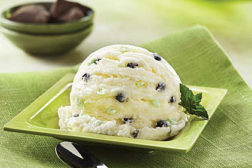Articles by Kimberly Decker
Hints for tints
How to work with natural colors in dairy foods and beverages
Don’t mourn the passing of synthetics just yet, says one color supplier. The demand for artificial colors has not decreased. It has remained very consistent and we expect to see that trend continue, he said.
September 15, 2013
A cultures and enzymes Q&A
Cultures help transform milk from a mild-flavored beverage into a smorgasbord of flavors, textures and products.
June 14, 2013
Functional ingredients boost the health and nutrition of dairy foods
Makers of dairy foods and beverages can boast about the inherent nutrition in their products. They also can boost the health claims by adding functional ingredients such as protein and omega-3s.
May 16, 2013
Sugar in the spotlight
Making foods taste sweet is one of sugar’s roles. It also provides bulk to foods and beverages, and depresses the freezing point in ice cream.
April 16, 2013
Using coffee and tea as ingredients
Americans drink tea and coffee because they enjoy the beverages and because they expect health benefits. Our roundtable discussion gives dairy processors ideas for creating foods with coffee and tea ingredients.
March 8, 2013
Texturants: Dairy’s ace in the hole
In creating healthy foods, formulators often reduce fat and sugar, the very ingredients responsible for the attributes creamy, smooth and soft that consumers expect in dairy foods. What’s the solution? Texturants.
January 20, 2013
Stay ahead of the curve. Unlock a dose of cutting-edge insights.
Receive our premium content directly to your inbox.
SIGN-UP TODAYCopyright ©2025. All Rights Reserved BNP Media.
Design, CMS, Hosting & Web Development :: ePublishing
